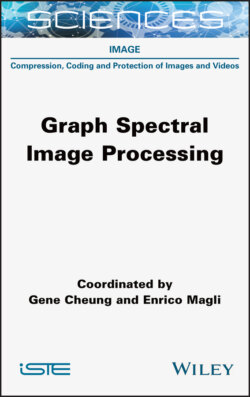Читать книгу Graph Spectral Image Processing - Gene Cheung - Страница 4
List of Tables
Оглавление1 Chapter 2Table 2.1. Comparison between different GSP-based approaches to graph learning. Table from (Dong et al. 2019) with permission
2 Chapter 4Table 4.1. DCTs/DSTs corresponding to ¯ with different vertex weightsTable 4.2. Comparison of KLT, S-GFT and NS-GFT with RDOT scheme in terms of BD-rate (% bitrate reduction) with respect to the DCT. Smaller (negative) BD-rates mean better compressionTable 4.3. Comparison of KLT, S-GFT and NS-GFT for coding of different prediction modes in terms of BD-rate with respect to the DCT. Smaller (negative) BD-rates mean better compressionTable 4.4. The contribution of GL-GFT and EA-GFT in terms of BD-rate with respect to the DCT. Smaller (negative) BD-rates mean better compression
3 Chapter 6Table 6.1. Property comparison of different graph LaplaciansTable 6.2. Comparison with different graph variants in PSNR(dB) at QF = 5
4 Chapter 7Table 7.1. Classification accuracy (%) on the ModelNet40 dataset
5 Chapter 9Table 9.1. Classification error rate (%) for the CIFAR10 dataset for different labeling ratios (%)Table 9.2. Classification error rate (%) for the CIFAR10 dataset using sufficient training data under different label noise levels
6 Chapter 10Table 10.1. Mean F1 score weighted by class frequency on Sydney Urban Objects dataset (De Deuge et al. 2013)Table 10.2. Mean class accuracy (respectively, mean instance accuracy) on ModelNet datasets (Wu et al. 2015)Table 10.3. Part segmentation results on ShapeNet part dataset (Yi et al. 2016). The results show the mean computed for all classes; for more detailed results, we refer the reader to (Wang et al. 2019)Table 10.4. Natural image denoising results. The evaluation metric is PSNR (dB)Table 10.5. Quantitative comparisonsTable 10.6. Completion error for synthetic range scans.
